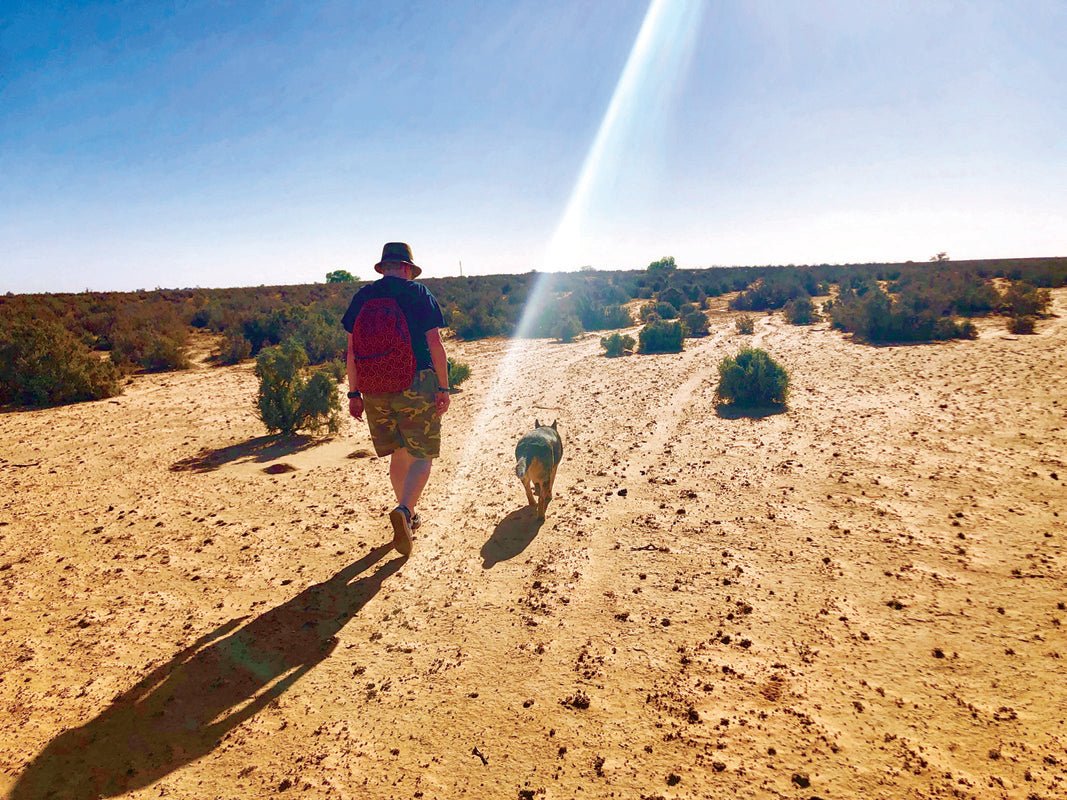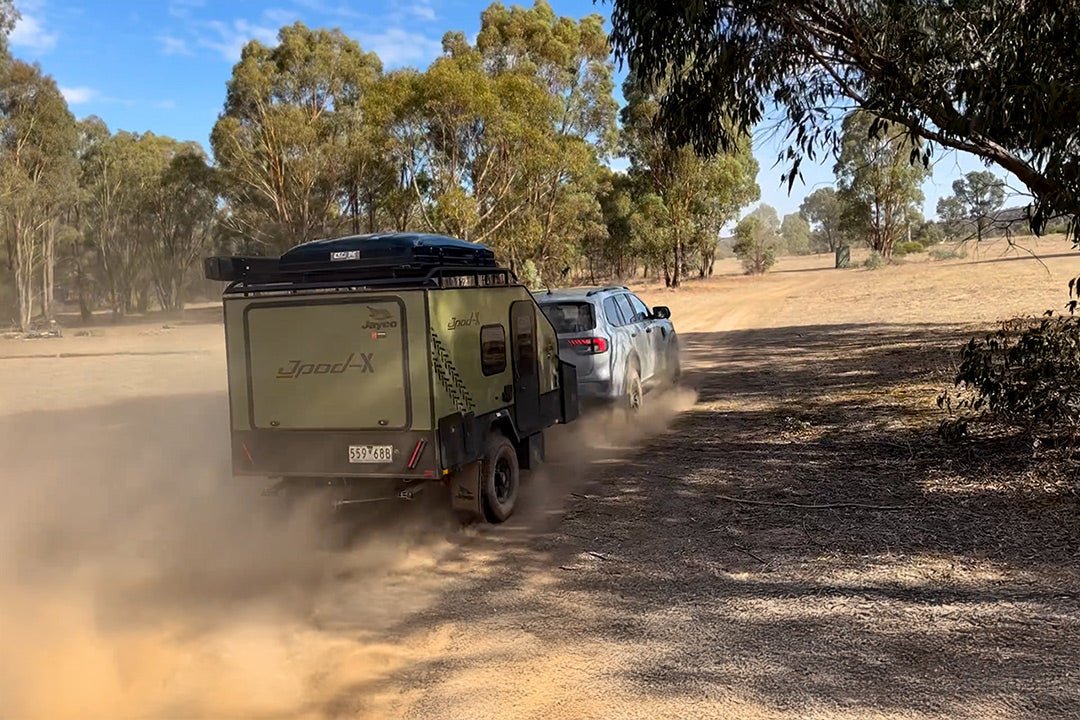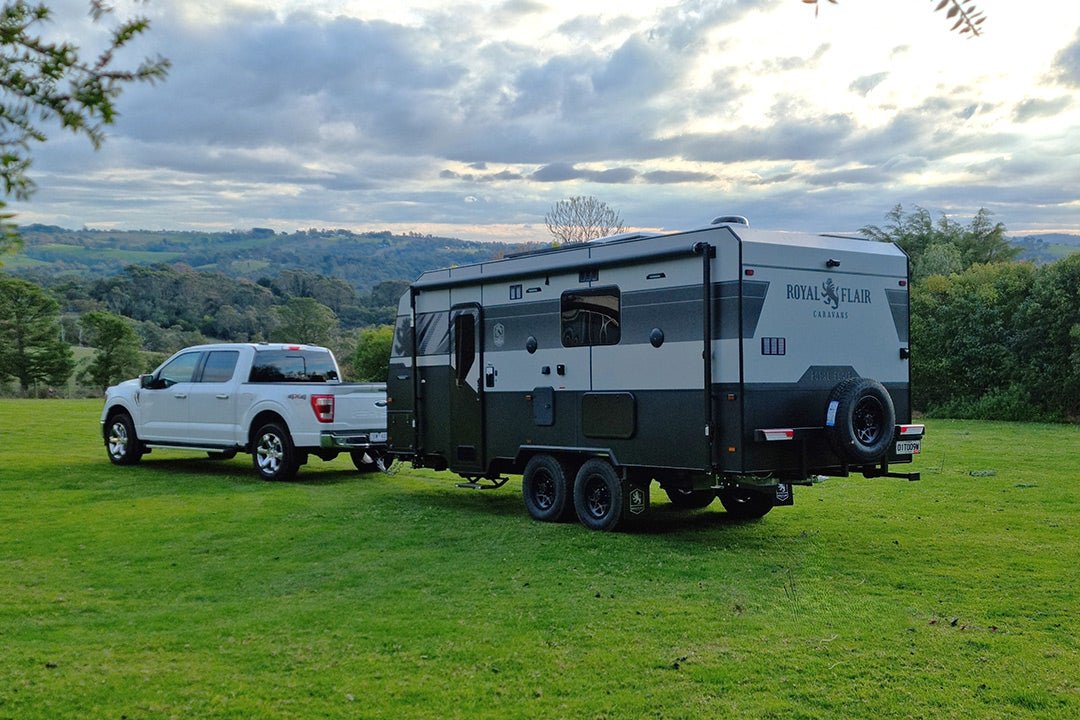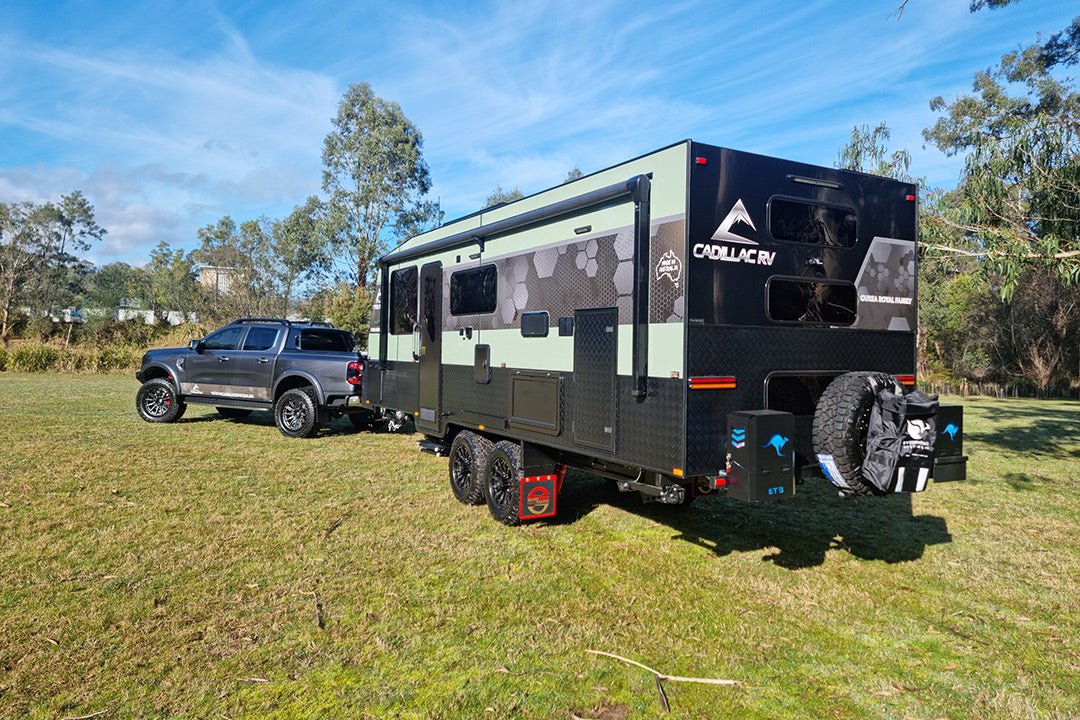Mapping the Past

Delving into your family’s past can take you on a journey more profound than you could ever anticipate. It’s more than just generating a family tree online and printing it out to give to Aunt Rita on her birthday — tracing your ancestry is an incredibly personal experience.
While it’s infinitely rewarding, it can also be quite confrontational. You’ll uncover tales of hardship and heartbreak, but you’ll also see the true pioneering spirit of Australia’s early settlers shine through. While not every family has colonial heritage, each one does have a story and more often than not, there’s a fascinating tale or two waiting to be uncovered.
Australia’s early immigrants usually did it tough, travelling through some of the harshest, most unforgiving landscapes, but these days it’s much easier to access the small towns and remote outposts where they lived. With some research and planning you can develop a road trip itinerary that recreates their journey, to create the perfect getaway for a family to connect with each other and with those who came before.
ROAD TRIPPING
Retracing your family’s journey could lead through a series of major townships, coastal hotspots or regional centres, or it may be locations far more remote or even abandoned. It’s a road trip that can take you out of your comfort zone to places you’d probably never visit otherwise.
In my case, my father’s grandfather arrived in Van Diemen’s Land from Stafford, UK as a convict. That branch of our family’s geographic journey can be traced to Mt Gambier in South Australia; Colac, Bendigo, Kulkyne and Benalla in Victoria; and to a lonely and remote livestock station at Hatfield in outback NSW.
We have made singular trips to many of these places but, if you have the time, you could also create a route to take in several on the one trip.
With careful planning and packing of your van or camper, you can be comfortable and self-sufficient as long as you need, even in the most remote locations.
The trick is to map out as much as possible before you go so you can easily find the locations of old homes, workplaces, train stations and gravesites — whatever is relevant to your family tree. Take as many maps and documents with you as you can, as not every location will allow access to the internet or GPS. In some places, you might not see another person for days.
TRACE YOUR BACKSTORY
Of course, before you can plan a road trip, you need to know where you’re going. To begin researching your family history, all you need is a computer, the internet and a starting point, such as your grandparents' names, an approximate birth date, and/or place of birth.
Most ancestry sites act as massive databases, using existing research and information from other family historians. Be wary though, as some people don’t thoroughly research and add incorrect lineages: one mistake with a name or date and you could be researching someone else’s family!
Some of it is guesswork, but it’s informed guesswork. You can usually figure out which pieces are parts of your jigsaw puzzle and which are best left in the ‘maybe’ or ‘definitely not’ piles. Most sites allow you to store photographs and other documents you discover such as birth, marriage and death certificates, electoral roll details, newspaper articles, immigration and travel logs and even criminal records. It can be a bit of a rabbit hole though! One minute you’re searching for a specific birth or death certificate, and suddenly it’s 2am and you’re trying to find out whether great uncle Fred was a blacksmith or a farmer.
Researching your family history and creating a roadmap to add to your travel bucket list takes time and energy — but it’s worth it. In my case, through countless hours of meticulous research, I was able to trace my dad John’s family and their arrival to Australia — and it wasn’t at all what I had expected.
CONVICT HERITAGE
While a decent proportion of immigrants to Australia came to create a new life, buoyed by the promise of a new and potentially prosperous land, others were sent here as punishment — including my great-great-grandfather, John Hartshorne.
Born in 1828 at Stoke-on-Trent in Staffordshire, England, John had a rough start. The son of poor working-class parents, John’s mother Martha died at 35 when he was just 10 years old. With one income and multiple mouths to feed, John had little choice but to steal to survive.
After a few scrapes with the law, John’s luck ran out at age 13 when he was arrested for stealing a pair of trousers, braces, onions, apples, pears and a basket. He was sentenced to seven years imprisonment, and after a year on a prison hulk, he was one of 188 convicts transported on the Asiatic to Van Diemen’s Land (Tasmania).
He arrived in Australia four months later in September 1843 after a gruelling journey — two men died enroute — and was put to work in a road gang at Port Arthur and Point Puer for two years. You can still see remains of the early convicts’ work at this site and get a real appreciation of the isolation they must have felt, particularly those working at Point Puer boys’ prison.
John kept his head down and worked hard (there might have been one or two AWOL reports, but hey, he was only 15) and by 1849, he was a free man. He stayed in the area, labouring and saving money, and in January 1852 boarded the Halcyon in Launceston bound for Melbourne. He married 25-year-old Scottish servant Elisabeth (also spelt Elizabeth) Aitchison (lured from Edinburgh by the promise of a new start and guaranteed work) just 11 months after arriving in Victoria.
By 1870, they had travelled to Mount Gambier, SA, Ashby near Geelong in Victoria, through to Bendigo, up to Kulkyne near Mildura where John worked as a logger, before finally settling in Hatfield in outback NSW.
With four living children, John and Elisabeth established a farm on Lot 3, directly behind where the Hatfield Hotel still stands today, on a 320-acre freehold block they called Pine Grove. Some of their children worked on nearby stations, including Til Til to the north, while others married and settled in Hatfield and as far as Balranald, 115km away.
My paternal great-grandmother Hannah, born in the logging fields of Kulkyne forest, married Balranald lad Thomas Barrett in 1887, and by 1890 they had also settled at Pine Grove, having 14 children there. Some passed away in infancy and were buried on the property alongside John and Elisabeth, who died aged 78 and 79, in 1906 and 1908, respectively.
It was at Pine Grove that I wanted to pick up my ancestors’ story, so we packed our 4WD with a tent and everything we needed to be self-sufficient for a few nights and drove 540km from Melbourne to the middle of nowhere.
THE DESTINATION
With family road trips, there is plenty of opportunity to visit sites of significance as well as a few other places along the way. We followed the amazing silo art trail outside Brim, Sheep Hills and Lascelles for the first time, ticked a ghost tour at the eerie Aradale Lunatic Asylum off our bucket list and were thrilled to see kangaroos leap through open pastures and mobs of emus running along the side of the road in southern NSW.
But for me the destination was bigger than the journey this time — I was anxious to see what was waiting to be discovered at Pine Grove.
Driving through the small country town of Balranald, the last major town before Hatfield, I could already feel a connection to the area, even though I’d never been there before. My research revealed three of Hannah and Thomas’ children are buried here — my great uncles John Thomas, who tragically died from arsenic poisoning when he drank from a tainted well on a remote station, James Charles, and Frederick Frances. Even though my family would have had limited resources at the time, they erected a beautiful marble gravestone with a heartbreaking inscription as a fitting tribute to those gone too soon.
More than 100km up the Ivanhoe-Balranald Rd is the tiny hamlet of Hatfield where the once iconic but now abandoned Hatfield Hotel still stands. It’s desolate out here — the road feels deserted, the heat rises from the brown dusty land and the hotel is a cracked and broken reminder of a once thriving farming community.
According to historic newspaper reports, it was here in 1879 that a band of hot-headed Kelly Gang wannabes nicknamed the Hatfield Bushrangers hatched their plans to hold up the nearby Grainger’s Store. North of the hotel they came across a member of the Hartshorne family, likely James or maybe even John himself, who was working at nearby Til Til Station, and demanded his horse. When he refused and galloped off through the saltbush, the gang fired two shots at him, one hitting his saddle but leaving him and his horse unscathed.
When we’d finished exploring the hotel and surrounds, we were faced with the most unexpected challenge of our trip so far — glass.
HAVE A BACKUP PLAN
When the Hatfield Hotel closed, the owners obviously hosted one hell of a send-off, as it was surrounded on all sides by smashed beer, wine and spirit bottles. And the only direct track between the main road and the site of the Pine Grove homestead was covered in tyre-puncturing shards. We either had to clear the road somehow or lug our camping gear (tent, full camp kitchen, gas bottles, lights, chairs, air mattresses, bedding … you get the idea) for 2km in 34C accompanied by millions of flies. Someone would also have to carry our dog, Billy the Blue Heeler, past the danger zone.
We decided to find another way in. We knew there would be little to no GPS reception in this remote area so, armed with historical maps and screenshots from Google Earth printed at home, we tried to find an alternate route through neighbouring paddocks on the south-eastern border.
Here we encountered challenge number two: unforgiving saltbush. If you're precious about your paintwork and heading into unknown territory, make sure you’re emotionally prepared for the carnage you may have to deal with. Unmapped fence lines restricted access to the homestead and close encounters with the ubiquitous scratch-the-hell-out-of-your-car saltbush left us with severely damaged paintwork. We needed Plan C.
Back at the hotel, we wandered across the road to the Hatfield Community Hall. A quick scout turned up a thick-bristled broom which we borrowed, and we took turns to painstakingly dig out glass shards and sweep it off the dirt track, while the other carefully navigated the car along the swept trail. At this point, we realised we had a few friends along for the ride.
Parts of this big, beautiful country are home to sprawling sheep stations and we learned quickly that where there are sheep, there are flies. So many flies. They get in your mouth and ears, your food, your sleeping bag and your clothes. And they love sweaty people. After a rather physical hour sweeping, swatting and swearing, we were through.
A short drive further up the track and we could see the spot where we’d later find the remains of the Hartshorne/Barrett homestead. We found the best place to pitch the tent, battled the fly onslaught and local ant nests, and got set up. Then it was time to find the homestead.
After all that, it was amazing to be rewarded. While I couldn't locate the graves of my ancestors, I did find the remnants of the homestead’s wooden structure as well as items they’d left behind — a rusty door lock, some horseshoes, nails from the homestead and out buildings, and an old metal washing tub. It would all be rubbish to anyone else, but to me it was more precious than gold. Standing on their land and gazing out into the endless nothingness surrounding the property gave me a real appreciation of what life must have been like. It was so isolated, so desolate, and they had no way of knowing if they had what it took to raise a family there. But they battled on, through droughts and floods, and more than 100 years later, here I was — because of them.
Watching the sunset over Pine Grove that evening, with a cold beer and my new-found trinkets as rewards, I felt like my ancestors were right there too, enjoying the serenity.
ADVENTURE AWAITS
Who knows what awaits you on your own personal ancestry journey. One thing is for sure though — you’ll come away from it with a deeper understanding of yourself and your family, who you are, where you came from and hopefully, a great sense of new-found pride.
Just don’t forget the Aerogard and your sense of adventure.
START YOUR ENGINES
There are a variety of websites you can use to start tracing your ancestors. Most of these charge fees for use, either monthly or annual, but some offer a free trial, or limited access to common databases for free. Once you get the basics done, you’ll need a premium subscription to access more detailed records. Some sites offer features such as DNA testing (if you choose to, your results can be used to match you with potential relatives), discussion forums and access to qualified genealogists if you need specialised help or get stuck.
Here are a few tried and tested sites to get started:
Ancestry.com.au
FindMyPast.com.au
https://www.familysearch.org







